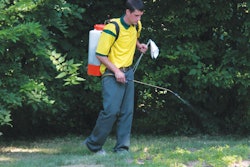
Are you making a profit? Are you sure? How are you determining what to charge? Are you setting your service fees, or are you letting other factors determine your pricing? Maybe the answer lies in-between all of those questions.
One of the toughest business decisions we make as contractors is how much to charge for the services we offer. For the first nine years of my business, I had no idea why I charged what I charged other than that’s what I thought the market would bear and that’s what my competition was charging. That pricing methodology had me 90k in debt and nearly put me right out of business. As a matter of fact, I thought the only problem I had was that I needed more work.
Looking back at this now, I understand why I was always frustrated working seven days a week and still not making any money. I was not running my own business.
8 common, but flawed pricing methods
1. I am small so I can do it cheaper.
2. Guess method – I was making $12 an hour at my “real” job.
3. Competition is charging $x.xx per hour it must be right.
4. Our market will never pay what I want to charge.
5. I ask the client what it will take to get the job.
6. Dartboard method – Throw a dart each day and change pricing based on how bad you need the job.
7. Flinch method – Keep going until the client flinches.
8. I use the Industry Standard, so it must be right.
These are all creative ways to price your jobs, but they are all wrong. Yes, they may play a part in your bidding strategies. But first and most importantly, you must know what your actual costs per hour of operation are for your company. Here is why.
1. Smaller cannot always do it cheaper. The more you utilize a piece of equipment, the less expensive your direct costs per hour of operation become.
2. Guessing at your hourly rate based on what you were making at your real job before you got laid off doesn’t work either. I call that paycheck mentality.
3. Competition must be right. Really? If you could count on your competition to price your jobs, the failure rate for the industry would not be so high.
4. Before you say your market will never pay your price, have you determined what your price should actually be?
5. Why not ask the client what it will take to get the job? When you ask your potential client what it will take to get the job, you are basically telling them you are hungry and you will meet or beat anyone’s price. Even though we all need the work, the last thing we want to do is give our potential customer the upper-hand. They will beat you down on pricing for sure at that point.
6. Don’t change your pricing on a daily basis. When you know what your actual costs are, it is easier to sell it at a fixed price.
7. The flinch method may or may not work. Regardless, I am not sure I want to count on the flinch method for the success of my business. It’s better to have a pricing strategy based on your costs and desired profit.
8. Industry Standards cannot be counted on either in my opinion. Why not? If the industry standard was right for everyone, the failure rates would not be so high. Based on the contractors that I talk to across the United States and Canada, too many are not utilizing a cost recovery system for their business. Thus, the industry standard is not accurate.
It’s about YOUR hourly rate
The only number I am concerned with at my business is my hourly rate. By knowing my costs, I can utilize my time and effort attracting the type of clientele that I know can afford my service. I don’t necessarily want to be the cheapest price; I want to be their best option.
Do you know what it costs you per hour of operation for your truck, trailer, equipment, labor, etc? If not, find out. Then you can implement a cost recovery system that is based on your company’s overhead, expenses and use-rates. The reality is that everyone’s costs per hour of operation is different. Chat rooms and chat boards are great for some information. But in my opinion, the dollar-a-minute theory and the many other similar pricing strategies are often way off target. Pricing is not a one size fits all proposition.
Develop your own cost recovery system
We determine our cost per hour by looking at several things.
Direct cost will include things such as equipment purchase price, financing if financed, expected hours of use, insurance, taxes and licensing fee. These are things that will not change.
Variable cost include things such as fuel, oil changes, maintenance, repairs, belts, hoses, tires, etc. Basically any cost associated with operating the equipment.
Additional overhead will include things such as rent, administrative cost, office equipment, uniforms, cell phones, electric, building maintenance, donations, marketing and advertising, trade shows you attend, etc.
Labor cost includes hourly rate of pay, social security match by employer, state and federal unemployment taxes, any type of benefits such as health insurance, paid time off, 401K, bonuses, gift cards, etc.
Taking all of these into consideration will show you what your break-even point is per hour based on your individual operating expenses. Now you have a number that is accurate for your company. Once that is determined, you can add desired profit margin to any service you offer based on your individual market and the type of clientele you want to service. Knowing this number will help you bid jobs more accurately and professionally by knowing what your true costs are to do the job.
You will find that your services are easier to sell at a different price once you really know what it cost to do the job. When a client says, “I’ll let you do the job if you can do it for this much,” you now know if the answer should be yes or no. Once you have a good understanding of your operating cost, you will you will no longer under-sell your services regardless of what your competition is charging.
Additionally, by knowing that your hourly costs are accurate, you can now manage your business for profitability by tracking the actual time to complete the job. There are two aspects involved to come up with the selling price to the client: 1) How much per hour to charge, and 2) how long will it take to complete. Now that you have a better understanding of how much to charge per hour, you can analyze your estimating process to establish the time to complete the job and make adjustments as necessary to help ensure profitability from the production side of your business. This will help you throughout the year to make better decisions and to more efficiently manage your company moving forward for years to come.
I always say, “Once you truly understand cost per hour of operation, everything else falls into place to help you manage and operate a more professional company.
There are many different cost recovery programs available that are very good and work well. Some are complete software programs while others are much less comprehensive and strictly do cost per hour of operation for your company. If you are satisfied with your current software program such as QuickBooks, keep using it. If you want to implement a simple, accurate and professional costs per hour of operation system for your company, check out profitsareus.com and download the “Know why you charge what you charge” CD. This CD runs in Microsoft Excel, and is designed in a spreadsheet format. You simply fill in the blanks and the spreadsheet will calculate your company’s costs per hour of operation based on your specific overhead, expenses and use-rates. It really is that simple. It does not replace software such as QuickBooks. Never under-sell your service again, guaranteed.


![Doosan Bobcat Wacker Neuson Stack 2ec Js Pb V6e[1]](https://img.greenindustrypros.com/mindful/acbm/workspaces/default/uploads/2025/12/doosan-bobcat-wacker-neuson-stack2ecjspbv6e1.CPyyz8ubHn.png?auto=format%2Ccompress&bg=fff&fill-color=fff&fit=fill&h=100&q=70&w=100)








![Doosan Bobcat Wacker Neuson Stack 2ec Js Pb V6e[1]](https://img.greenindustrypros.com/mindful/acbm/workspaces/default/uploads/2025/12/doosan-bobcat-wacker-neuson-stack2ecjspbv6e1.CPyyz8ubHn.png?ar=16%3A9&auto=format%2Ccompress&bg=fff&fill-color=fff&fit=fill&h=135&q=70&w=240)








